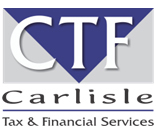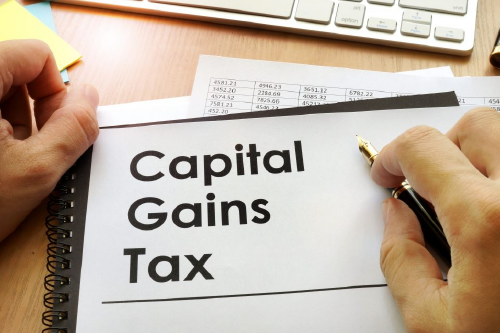Capital gains tax (CGT) can make you liable for tax on a portion of the capital gain you make on the disposal of property, businesses, certain investments and other assets in any tax year.
CGT is not a separate tax. The taxable part of your gain is added to your taxable income and income tax is paid on it.
You only pay tax on a taxable capital gain, which exists if you have a positive figure after:
- Adding together your capital gains that are not excluded, disregarded or that do not roll over;
- Deducting any capital losses you have made that are not excluded, disregarded or that do not roll over;
- Deducting the annual exclusion (see below), if applicable, to determine your aggregate capital gain;
- Deducting any assessed capital loss brought forward from the prior tax year to determine your net capital gain; and
- Multiplying your net capital gain by your inclusion rate to determine your taxable capital gain.
Alternatively, if your capital gains not excluded or rolled over for a year are less than the capital losses not excluded or rolled over, the amount is reduced by the annual exclusion (if applicable) and any remaining negative balance is an aggregate capital loss. This is carried forward to the next year, along with any capital loss brought forward from the prior year.
If you are a resident (for tax purposes) in South Africa, you should be aware you may have to pay CGT on gains made on the disposal of your property, investments and other assets held both in South African and abroad.
Non-residents (for tax purposes) may also be liable for CGT, but generally only on physical or immovable property – residential or commercial.
You, or your executor on your death, need to work out what CGT you are liable for when the following events occur:
- You sell property – including your home;
- You sell a business;
- You sell or switch an investment;
- You donate property or an investment;
- You cease to be a resident (for tax purposes) of South Africa;
- Your property is expropriated or destroyed but not replaced;
- Property or an investment in a trust vests in (or is secured by) you as a beneficiary;
- Your death.
In all of these cases you are regarded as disposing of the asset or are deemed to have disposed of the asset.
How do you work out the gains or losses you made?
Before you can work out how much CGT you need to pay, you need to work out what gain or loss you made on each of the assets subject to CGT that you have disposed of during the year.
The gain or loss is the amount you realise on selling or disposing of the asset – known as the proceeds – less the cost of acquiring the asset – known as the base cost.
When you cease to be a resident of South Africa (for tax purposes) or you die, you or your executor, may not actually sell your assets, but the law deems you to have disposed of them for the purposes of calculating CGT.
If you cease to be a resident of South Africa (for tax purposes), or if you die, the proceeds will be the market value of the property, business or investment you were deemed to have disposed of on the day before you cease to be a resident or on the date of death.
The base cost is made up of the amount you paid to acquire the asset plus any improvements you made to it.
Subtracting the base cost from the proceeds of that asset will determine your capital gain or capital loss.
CGT was introduced in October 2001. If your property or investment was acquired before this date, there are three ways to determine the base cost.
Exclusions
Some capital gains and losses are excluded from capital gains tax. The most important exclusions are the gains or losses you make from:
- Most personal belongings that you use, such as your motor vehicle, your furniture or appliances. Boats less than 10m in length and small aircraft that do not exceed 450kgs are also excluded. Your home (see below), larger boats and planes are, however, included in the CGT net, although losses on the latter two are also disregarded if not used to carry on a trade.
- Lump sums from your pension fund, provident fund, pension preservation fund, provident preservation fund or retirement annuity fund.
- Your tax-free savings account(s).
- Pay outs from a life insurance policy or endowment policy (as long as it is not a second hand policy or foreign policy).
- Prizes or winnings.
- Compensation for injuries or illness.
Capital gains and losses made by an individual or special trust on the sale of a primary residence and capital gains made by an individual or special trust:
- On an interest held by an individual in the active business assets of a small business held through a company, close corporation or partnership, or
- A small business’s active assets,
could be fully or partially disregarded in the calculation of the aggregate capital gain or aggregate capital loss if various requirements are met. The rules for determining the amounts that will be disregarded require special care and you should consider getting professional advice.
Rollovers
In some instances, you are not liable for CGT at the time you dispose of your asset because your capital gain is deferred or rolls over to a later date.
The two most important instances of this are:
- When you leave property to your spouse – the base cost of this property rolls over to your spouse and must be used when the surviving spouse disposes of the property, dies or emigrates.
- When assets, other than financial instruments, are destroyed, stolen or disposed of involuntarily because of the operation of a law and the proceeds of insurance or compensation result in a capital gain – this gain can be deferred if the full proceeds are used to acquire a replacement asset and specific requirements are met. In this instance, when the replacement property is disposed of, the capital gain for it is determined using the base cost of the original property.
What is the CGT rate?
The rate at which you pay CGT depends on two factors:
- Your inclusion rate; and
- Your marginal income tax rate.
For individuals and special trusts, the inclusion rate is 40%. This means only 40% of the net capital gain is added to your taxable income and then your marginal tax rate is applied.
For any other trust or a company (or closed corporation), the inclusion rate is 80%.
Annual exclusion
There are a few important things to note:
- Annual exclusion: Every year, as an individual you are entitled to make net capital gains of R40 000 without paying any tax.
So if, for example, you have no assessed capital loss brought forward from the prior year, you make a capital gain of R50 000 when you sell an investment and you have no other capital gains or losses that year, only R10 000 (R50 000 – R40 000 annual exclusion) will be regarded as your net capital gain. Your taxable capital gain will be 40% of R 10 000, which is R4 000.
- Exclusion in the year of your death: When you die you are deemed to have disposed of all your assets for CGT purposes on the day you die. In the tax year in which you die, the capital gains tax exclusion will be R300 000.
How do I declare and pay CGT?
You don’t have to register for CGT as it is not a separate tax. CGT is part of the income tax system and so you need to declare capital gains and losses on your income tax return.
SARS will apply the exclusions.
If you have made a net capital gain, you should also take it into account in your provisional tax returns.
If you make a capital gain that exceeds the annual exclusion and you are not registered for income tax, you need to register as a taxpayer and complete an income tax return for the year in which you made the gain.
Article: News24





